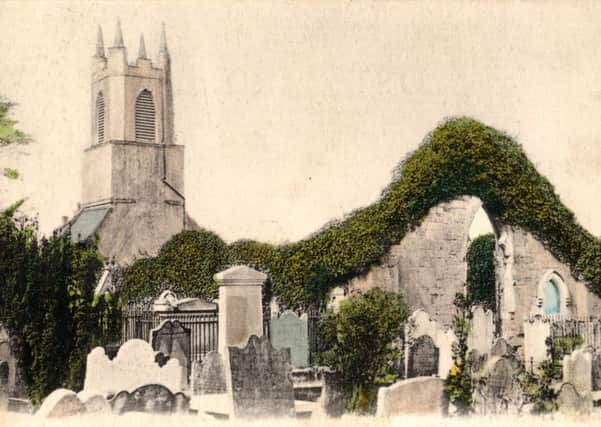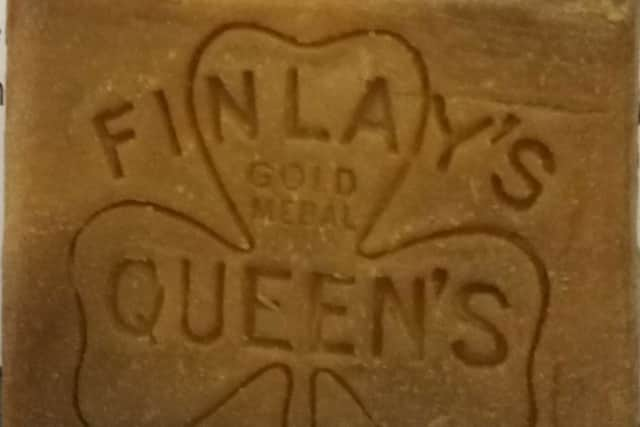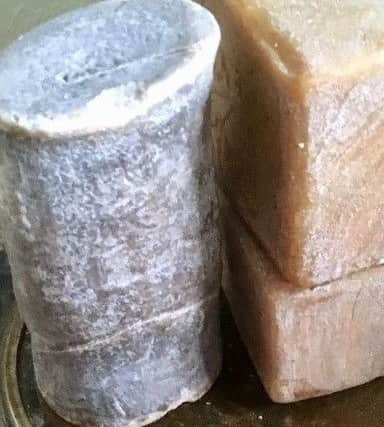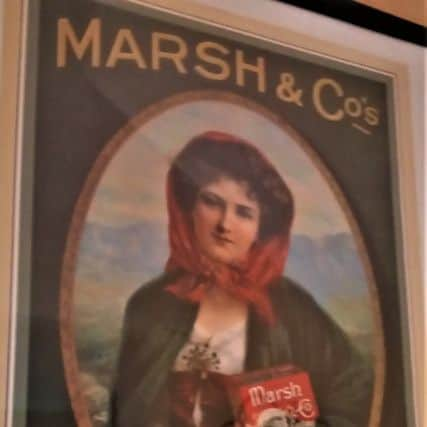A town famed for its flowers, factories facial soaps and mathematical formulae


In Enniskillen, where I was brought up, I often consider hymnwriter Henry Francis Lyte, schooled there in the early 1800s.
Engrossed with the dark and silent expansiveness of Lough Erne at night I imagine the iconic lines forming in young Henry’s mind – “Abide with me, fast falls the eventide. The darkness deepens, Lord with me abide.”
Advertisement
Hide AdAdvertisement
Hide AdWas it Fermanagh’s abundant forests, regularly encamped with travelling-people, that inspired Samuel Beckett’s vagabonds to hold their surreal dialogue under a tree whilst Waiting for Godot?


And did the Atlantic clouds constantly billowing up the Lough Erne basin stir Oscar Wilde to write “every wandering cloud that trailed its ravelled fleeces by” in his Ballad of Reading Gaol?
Fermanagh’s countryside certainly affected socialite, spy and Second World War resistance-fighter Monica de Wichfeld.
As recounted on this page recently, Monica was brought up on the shores of Lough Erne.
Advertisement
Hide AdAdvertisement
Hide AdThank you to the News Letter reader who sent me a reference to one of Monica’s letters where she admitted: “I always walked alone when I was a little girl; I set myself down on a rock in the lake and dreamed of how I would make my way…to see other lands, to get to know other people, to live life.”


While most of Ulster’s local communities boast an ample supply of historic figures and well-known ‘makers and shakers’, the large number of them, compiled alphabetically in a book called Holywood People, is truly remarkable.
Friday’s page mentioned just a few folk from the newly-published book, to which I return today.
And there’s a coincidence!
I’ve been told that some large houses near my current home beside Newtownabbey’s Mossley Mill were originally built for the Mill’s managers.
Advertisement
Hide AdAdvertisement
Hide Ad

Holywood People includes John and Henry Campbell, after whom Campbell College was named.
The Campbell family, who’d strong connections with the Holywood district, bought Mossley Mill in 1859 – “John was the manager of the mill, while Henry…dealt with the wider business community.”
As well as the managers’ houses around the mill there’s still a football field, old pathways, parks, and other portents of a thriving community.
Holywood People confirms that John and Henry Campbell “pursued the philanthropic model of Victorian socialism, building a village with a school and leisure facilities for their workforce. In the early 1870s the mill was so successful that John was able to buy Henry’s share of the business and Henry retired to live in Craigavad”.
Advertisement
Hide AdAdvertisement
Hide Ad

They’re included in the business and industry section of a book that records over 70 individuals and families, past and present, in and around Holywood, who’ve made their mark on the arts, in religion, education, politics and in the world of sport.
The earliest represented in the section about religion is Laisrén Mac Nasca (Saint Laisrén), a holy man best-known as the founder of the town’s ancient priory, completed around the year 635.
The Irish name for the town is called after him – Ard Mhic Nasca, meaning “the height of Nasca’s son”.
According to the book it’s likely that the priory grounds extended up to today’s Brook Street and may have taken in the hill of the motte.
Advertisement
Hide AdAdvertisement
Hide Ad“It was here that Holywood really took root and it is thus to Laisrén that the town owes its origins.”
The evocative remains of the Old Priory are still standing, but a historic house called Willesden, on the corner of Demesne Road and Church Road, was demolished at the end of the last century.


This was the home of Alexander Finlay who moved to Holywood when he married Matilda Carson in 1858.
Their sons Archie, Herbert and Robert managed the famous Finlay soapmaking business, started by Alexander’s father in 1798.
Advertisement
Hide AdAdvertisement
Hide AdIn various Belfast factories the company made candles and a wide range of soaps, including Pure Curd soap for washing muslin and Pine Tar soap for skin complaints.
Queen’s Pale, Silkstone and Nimrod soaps were the most widely used domestic soaps in the country before Alexander Finlay Ltd finally closed down in 1949.
The book records a polished granite block in the grounds of Willesden placed there by Archie Finlay “on which was engraved a mathematical formula – ‘the perfect square’”.
Archie was fond of mathematics and the family headstone in the priory graveyard bears reference to his formula.
Advertisement
Hide AdAdvertisement
Hide AdThe books long list of successful industrialists includes Miss Annette Marsh from Victoria Road, the last member of the Quaker Marsh family who established large biscuit factories in Belfast.
Holywood People claims that the Crosslé Car Company “might be considered one of Holywood’s best-kept secrets”.
Born in Scotland in 1931, John Crosslé bought property in the town in 1960 and set up what became the world’s longest-surviving racing car business.
Crosslé-manufactured cars sped John Watson, Eddie Jordan, Eddie Irvine and Nigel Mansell towards many chequered flags!
Advertisement
Hide AdAdvertisement
Hide AdAnd finally, far from the madding mill, soap-works or racetrack, Holywood boasts more delicate roots!
The district was the location for the discovery of the famous wild Irish Rose, rosa Hibernica, also known as the ‘Holywood rose’ or ‘Templeton’s rose’ after its discovery in 1795 by John Templeton.
Holywood People at £5, with all profits going to charity, is available in shops in the town, by email from [email protected] or at www.colourpointbooks.co.uk.